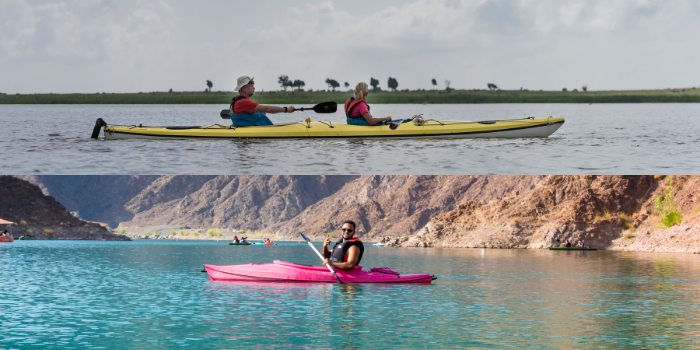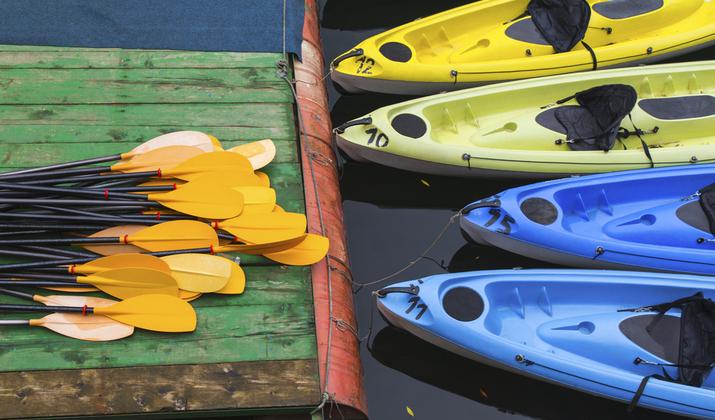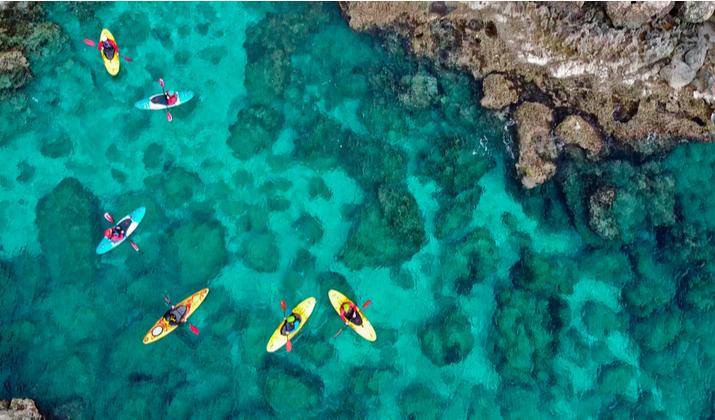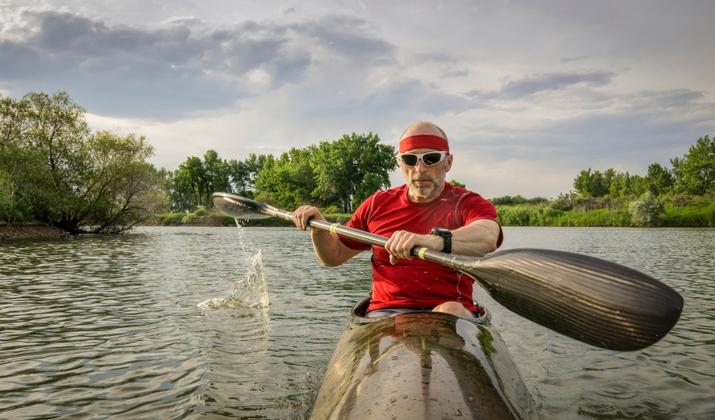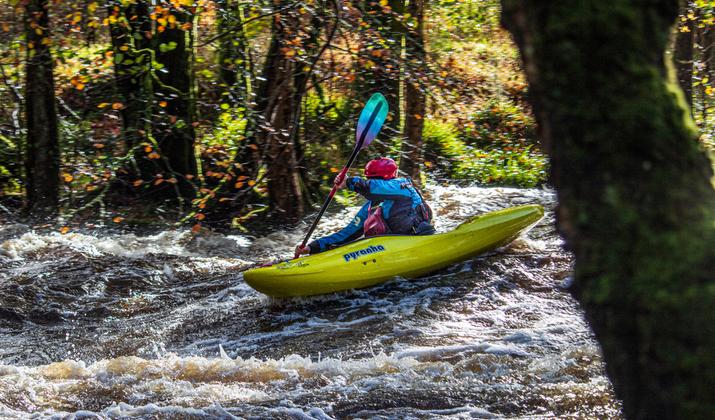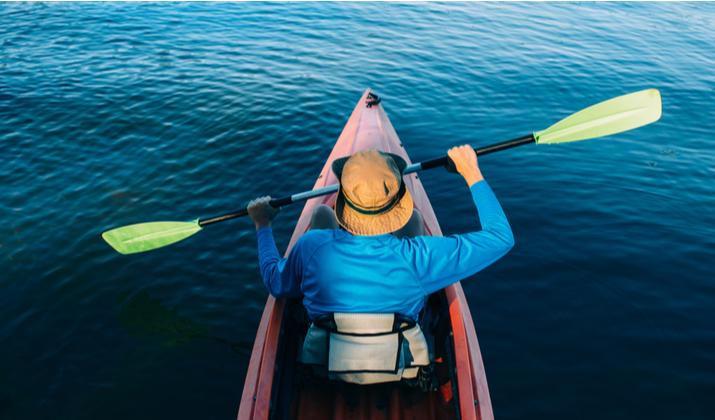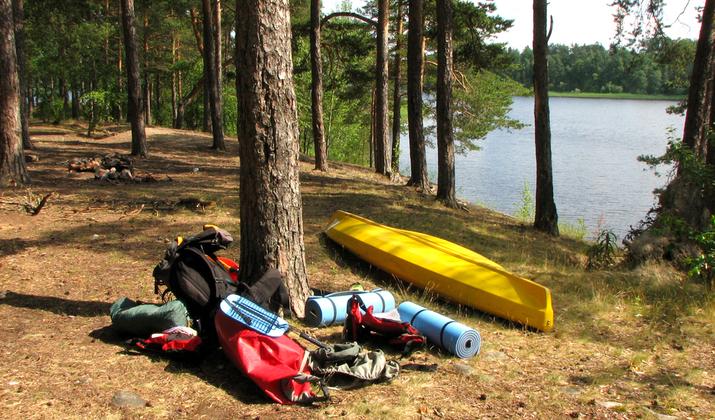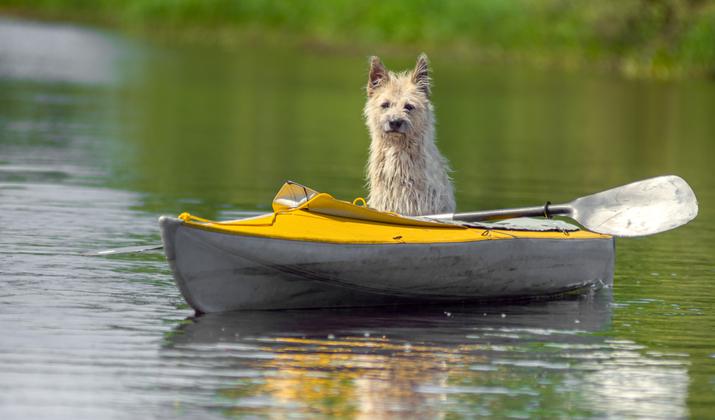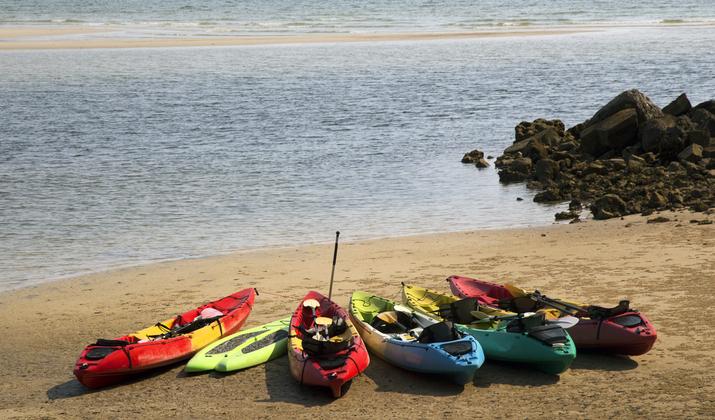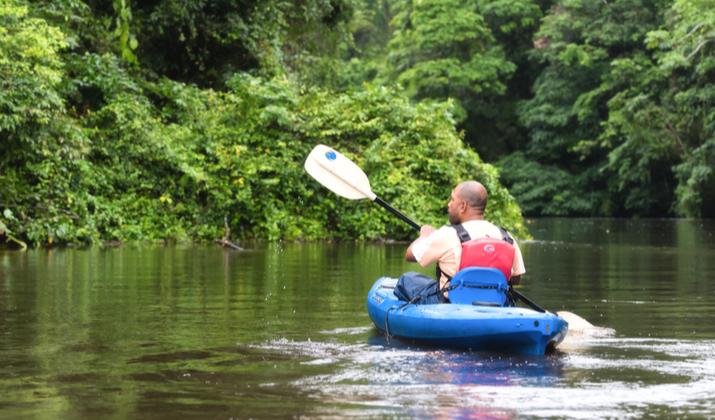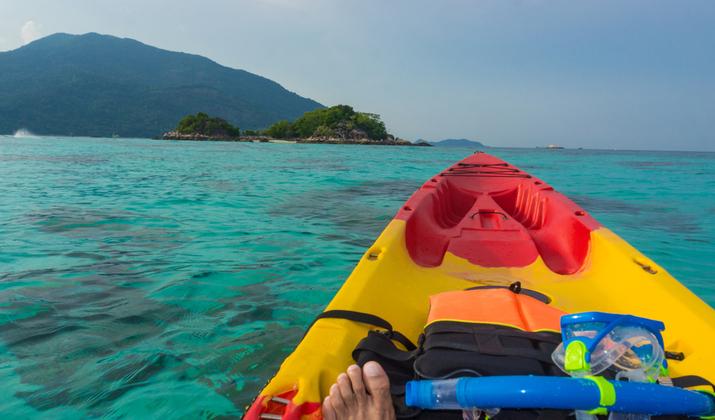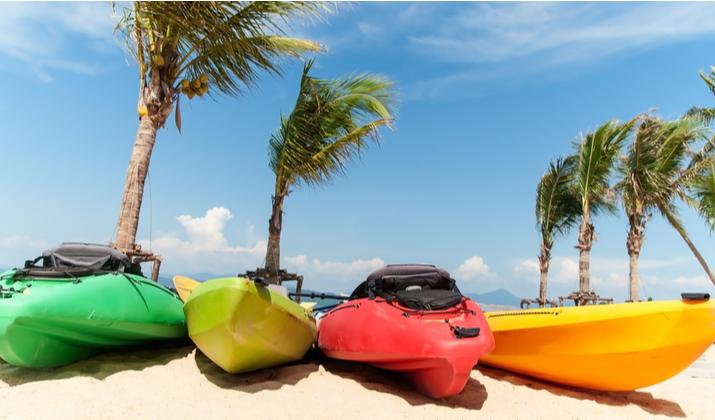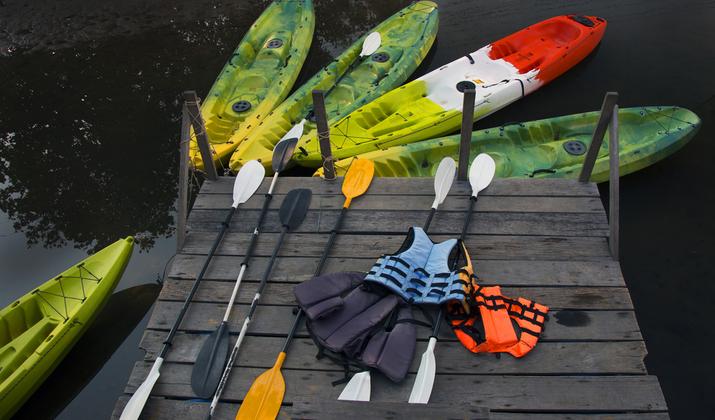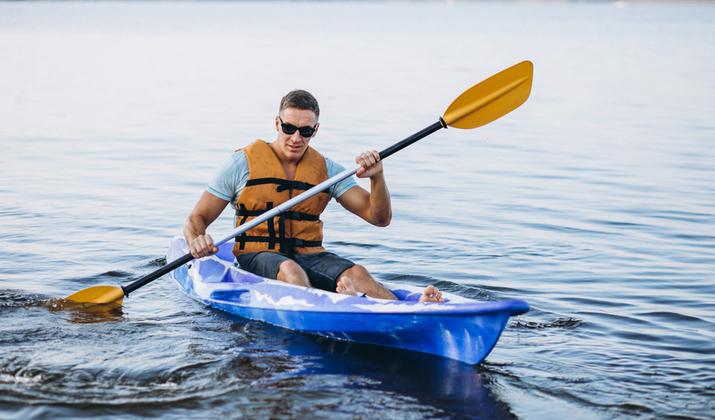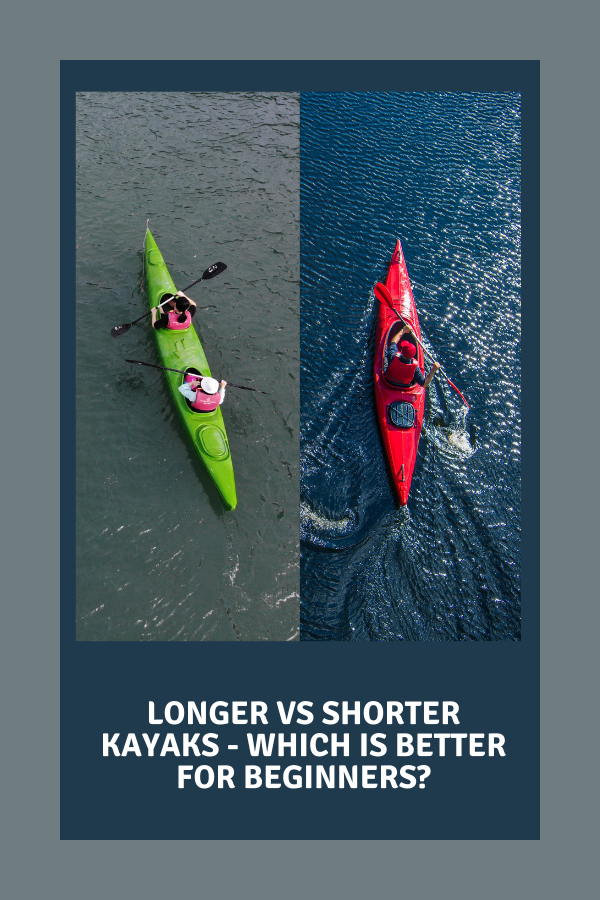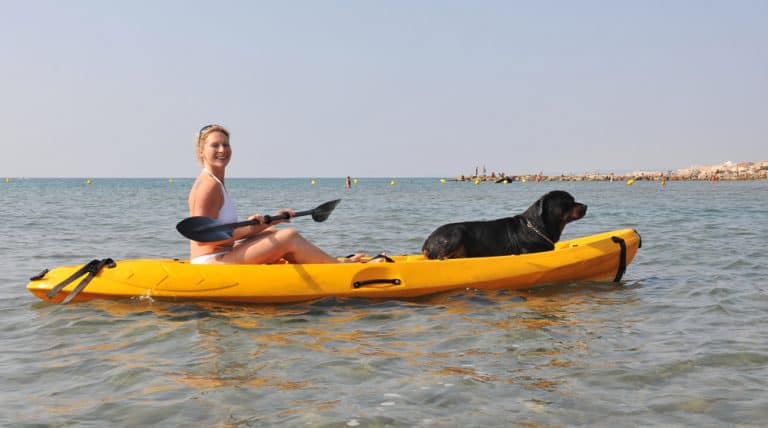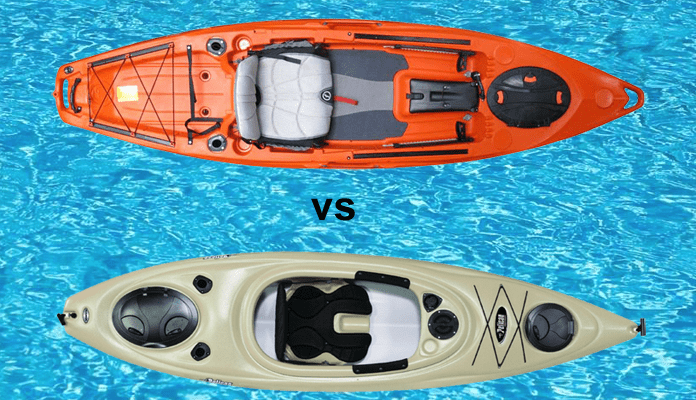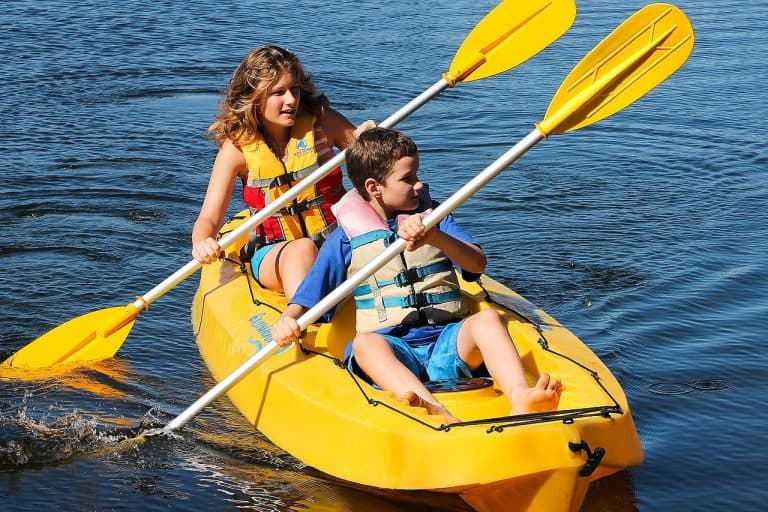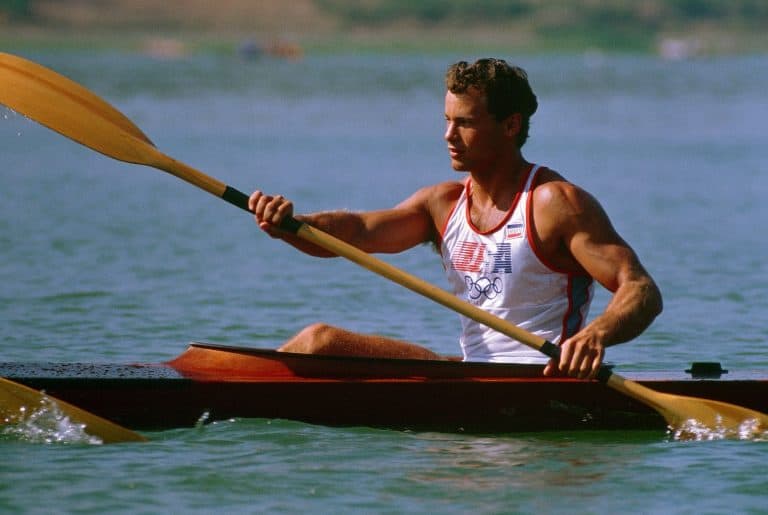The volume of kayak design principles you need to learn as a beginner can be overwhelming. Not to mention, it is easy to get confused when you are trying to decide between longer vs shorter kayaks.
For beginners, there are certainly advantages to choosing one of these types of kayaks over the other. Length alone, however, isn’t the only factor to consider when you are buying one of the best kayaks for beginners.
In today’s guide, we will provide definitive reasons why beginners should opt for shorter kayaks vs longer kayaks. We will also highlight the other features and specifications that make a kayak easier for beginners to handle.
Many kayakers graduate to different kayaks as they gain experience, but it is important to gain experience without being forced into a kayak that feels uncomfortable and makes you work too hard.
So, without further delay, let’s begin our discussion of whether longer vs shorter kayaks are better for beginners!
Photo by phadventure via Shutterstock
A Quick Breakdown of Longer vs Shorter Kayaks
Photo by Sheviakova Kateryna via Shutterstock
Definitively defining what separates longer kayaks from shorter kayaks can be a little subjective. For most experts, there is some consensus that kayaks with lengths under 12 feet are considered “short” and, therefore, kayaks over 12 feet in length are deemed to be “long.”
Unfortunately, an 11-foot kayak can be less stable and harder to maneuver than a 13-foot kayak, which is why length isn’t the only factor you need to look at when you are a beginner deciding what kind of kayak to use.
To cover the full spectrum, there are “short” kayaks that are as small as six feet in length and there are “long” kayaks that can measure up to 24 feet in length. Kayaks that are this long, however, are usually designed to be paddled by multiple people at the same time.
To put it very generally, shorter kayaks are usually better for beginners because they are easier to steer, lighter to carry, more affordable to purchase, and less cumbersome to transport.
Longer kayaks, on the other hand, are typically preferred by intermediate and experienced paddlers because they offer a higher weight capacity when you want to pack for multi-day trips, they tend to handle rough waters better, and they require less effort to paddle over a longer distance.
Longer vs Shorter Kayaks: A Side-by-Side Comparison
Now, that is a very general breakdown of the types of paddlers that should prefer longer vs shorter kayaks. As you might expect, there can be a little more nuance to your decision-making process than that.
So let’s dive into a more comprehensive, side-by-side breakdown of the differences between longer vs shorter kayaks.
How Does Kayak Length Impact Speed and Efficiency?
Photo by marekuliasz via Shutterstock
In this case, a kayak’s length does matter and we are going to tell you why. Longer kayaks have several advantages over their shorter counterparts in that they offer more efficient paddling and generally include more storage space onboard.
The paddling efficiency of longer kayaks is a product of a smaller length-to-width ratio. If two kayaks are equal in width, for example, but one is longer than the other, the longer kayak is going to offer less overall drag and provide more efficiency over long distances.
Many shorter kayaks, for example, will struggle to average much more than a paddling speed of two miles per hour on long-distance paddles. Longer kayaks, on the other hand, can average somewhere closer to 3-4 miles per hour (and sometimes up to 5 or 6 mph!).
This is why many intermediate and experienced paddlers eventually graduate to longer kayaks. A longer kayak will allow you to cover more ground in a shorter amount of time and also exert less effort in order to cover that distance.
As you can imagine, however, this is not really a huge priority for beginners because the likelihood that you are going to paddle for 5-7 hours per day is relatively low. Also, beginners should be more concerned with practicing their skills than covering serious ground when they are just starting out.
How Does Kayak Length Impact Stability and Maneuverability?
Photo by JB Photographic via Shutterstock
Generally speaking, shorter kayaks are both more stable and more maneuverable than longer kayaks. However, there is somewhat of a difference between primary and secondary stability, which is important for us to discuss.
Before we do that, however, let’s tackle the issue of maneuverability very briefly because it is a little more cut-and-dry than kayak stability.
It should be relatively obvious that a shorter kayak is going to be easier to turn than a longer kayak. Longer kayaks are meant for straight-line speed and tracking efficiency, but they can be tough to turn on a dime.
This is why beginners should gravitate towards shorter kayaks when they are learning how to stay balanced in a kayak. Circumstances like heavy winds and large waves can make it even harder to turn your kayak if it is especially long.
If you are a beginner that is just learning the importance of pointing the bow of your kayak into oncoming waves or investigating how to maneuver through a cross-current, your life is going to be much easier with a shorter kayak.
Primary vs Secondary Stability with Short vs Long Kayaks
Photo by Peakstock via Shutterstock
Okay, it is time to tackle this confusing mystery of primary and secondary stability. Wait, there are two types of stability? Yes.
Primary stability refers to a kayak’s ability to remain stable on flat water. For all practical purposes, it translates to how wobbly or tippy a kayak feels when you first sit inside of it and before you actually start moving.
A kayak with great primary stability is really important for beginners because it will be forgiving as you are learning how you can (and cannot) shift your weight without causing your kayak to tip over completely.
Generally speaking, shorter (and wider) kayaks tend to have better primary stability than longer (and narrower) kayaks. This also allows beginners to feel more comfortable taking rest breaks when they are building up their kayak fitness level.
Secondary stability refers to the kayak’s ability to retain stability when it is tipped onto its edge. In other words, a kayak with good secondary stability makes it easier for the kayaker to edge or lean over to execute more powerful paddle strokes.
A kayak with good secondary stability is what many whitewater kayakers look for because it can aid in their recovery when a large wave or rapid begins to tip them over.
With longer kayaks, however, secondary stability lends itself well to speed and efficiency because you will be able to lean further (and therefore dip the blade of your paddle deeper into the water) without fear of capsizing.
Overall, primary stability is more important for beginners and it is found on most shorter kayaks. While longer kayaks can actually be more stable for more intense types of paddling, they aren’t the best for beginners.
How Does Kayak Length Impact Storage Space?
Photo by Irina_Kulikova via Shutterstock
A kayak’s length definitely impacts its available storage space and the equation is a relatively simple one. As kayak length increases, kayak storage space also increases (this is true 99.9% of the time).
This is generally because there is just more room to work with on the deck (for sit-on-top kayaks) or in the bulkheads (for sit-inside designs). This is really important for experienced paddlers that are learning how to pack a sea kayak for camping, for example.
Now, what a kayak’s length will not dictate is the style of the storage space on that kayak. There are long kayaks that have open storage areas with a bungee cord stretched over them and there are also designs with enclosed, watertight storage hatches.
This is conversely true for shorter kayaks, so it is important to remember that length increases the amount of storage space on most kayaks, but it does not impact how that storage space is designed and laid out.
What About a Kayak’s Cockpit Design?
Photo by Fotangel via Shutterstock
The length of a kayak is not necessarily going to impact how its cockpit is designed. You will find both short and long kayaks with open, sit-on-top cockpits and those with closed, sit-inside designs.
So this kayak feature really isn’t impacted much by length. However, longer kayaks do tend to offer the additional space needed to create a longer cockpit (whether it is of the sit-inside or sit-on-top variety).
This is why some beginners may venture into the “long” kayak category for their first kayak if they are seeking more comfort. This is especially the case for taller individuals who need added cockpit space to stretch out their legs.
And How About Other Kayak Features and Accessories?
Photo by Suthat Chaithaweesap via Shutterstock
Once again, kayak length unfortunately does not dictate the features, add-ons, or accessories that a specific kayak model comes with. You will find short and long kayaks with all the bells and whistles you would want on one of the best fishing kayaks, for example.
You will also find very basic designs out there that simply provide a kayak seat, a couple of storage areas, and not much else. Sorry, but choosing a long kayak isn’t always going to get you a bunch of cool extra features and accessories that you can’t find on a shorter kayak as well.
Important Kayak Features For Beginners
In addition to considering whether a longer or shorter kayak makes more sense for you as a beginner, there are several other features you need to think about. Let’s take a look at some of those features and highlight what is best for those of you just getting into kayaking.
Stability
Photo by Marco Lissoni via Shutterstock
This is perhaps the most important feature you need to look for when you are just starting out as a kayaker. Yes, there is some reasonable expectation that you are going to end up in the water at some point, but a more stable kayak will keep you upright and as dry as possible.
There are two main specifications that contribute to a kayak’s stability: width and hull design. As we will expound upon more, later on, a wider kayak is generally going to be a safer bet for beginners.
In addition to width (also known as ”˜beam’), you need to consider how the manufacturer designed the hull. Flat and pontoon-style kayak hulls tend to be the most stable when you are just learning the basics of kayaking.
Cockpit Design
Photo by Makhh via Shutterstock
Almost all kayaks can be broken down into two categories based on the design of the cockpit: sit-on-top kayaks and sit-in kayaks. The latter has smaller cockpit openings that can be more difficult to enter and exit when you are just learning how to kayak.
We recommend that beginners start with a sit-on-top kayak because they are more forgiving when you are learning how to balance. They are designed with scupper holes in the hull that naturally drains any water that accumulates in the cockpit.
This design feature makes them much easier to flip back over if you happen to lean too far in one direction and capsize. They also will not require that you purchase a bilge pump to clear water out of the cockpit after you turn it over and climb back inside.
Some folks that do most of their paddling in cold water do not enjoy the inclusion of scupper holes in their kayak because it can allow a small amount of water up into the cockpit from underneath. However, this is the reason why they make scupper plugs so you can seal the hull if you desire.
Sit-in kayaks have certain advantages for more experienced paddlers, such as higher top speeds and better straight-line tracking over long distances. However, their closed deck cockpit design can create a seal with the water’s surface that makes them much harder to turn over and climb back into if you capsize.
Hull Shape
Photo by Zhou Eka via Shutterstock
Hull shape also plays a massive role in how a kayak handles on the water. In general, there are four main types of kayak hull shapes, although there is some variation between them and you will certainly find some “hybrid” designs out there.
The four major hull shapes are flat, rounded, V-shaped, and pontoon (which is also sometimes called “tunnel-shaped”). V-shaped hulls tend to be the best at minimizing drag and achieving better speed and tracking, even if they can make the kayak a little tippy when it is not moving.
Rounded hulls are generally found on the best whitewater kayaks because they can regain their stability even if they are tipped way over onto their edges. They are also extremely maneuverable and responsive when you are kayaking in big water.
For beginners, however, the best kayak hull shapes are either flat or pontoon-style. These shapes offer the most stability when your kayak is stationary or when you are moving at slower speeds.
They also maintain reasonable maneuverability so that you don’t need ten paddle strokes just to turn your kayak around and head back to the shore. As a quick aside, if you are a beginner who is also interested in kayak fishing, then you should definitely choose a kayak with a pontoon-style hull shape.
Add-Ons and Accessories
Photo by Suthat Chaithaweesap via Shutterstock
For beginners, a kayak is not enough to get you out on the water. You will need a kayak paddle, personal flotation device (PFD), dry bags, and a host of other gear and accessories to assure your safety.
These added investments are just a part of getting into kayaking, but they tend to dissuade many beginners. That is why we advise looking for a kayak that comes as part of a larger package.
Many of the shorter kayaks out there are, for one, more affordable than their longer counterparts. They are also more likely to come with some of the other gear you need for kayaking, which ultimately keeps even more money in your pocket.
This is the best-case scenario if you are a beginner because you do not have to do a separate research process for all of the essential kayaking accessories that all safe and responsible paddlers should have on their kayak.
Conclusion – Which is Better for Beginners?
Photo by PH888 via Shutterstock
To put it as definitely as possible, beginners should stick to shorter kayaks. The stability and maneuverability that these kayaks offer are really important to your ability to build confidence with your kayaking skills.
Shorter kayaks are also better for beginners because they are more affordable, easier to use, and less of a hassle to store and transport. Also, the resale market is better for shorter kayaks, which means you will have an easier time selling and upgrading down the line.
It should, however, be noted that taller paddlers need a kayak in the upper end of the “short” spectrum (i.e. 11 to 12 feet). Smaller paddlers should stick to a kayak in the 8-10 foot range.
While shorter paddlers may look at kayaks under seven feet long, these would fall into the category of the best kayaks for kids!

